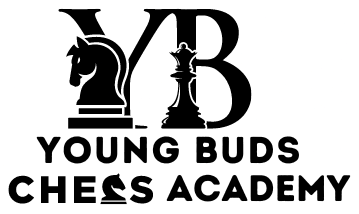Chess is often viewed as a quiet, solitary game, but for kids, it’s a vibrant social experience that fosters connection and personal growth. From chess clubs to online platforms to local community centers, chess brings children together, helping them build friendships, develop teamwork skills, and learn the value of sportsmanship. Here’s how chess is a social powerhouse tool for kids and why it can enrich their social lives.
Creating a Sense of Community
Chess clubs and tournaments are hubs of social interaction. Kids meet peers from different schools, neighborhoods, and even countries, united by their love for the game. For shy or introverted children, chess provides a low-pressure way to connect with others. They bond over shared challenges, like mastering the Sicilian Defense or laughing about a blunder, creating friendships that often last for years.
These communities are inclusive, welcoming players of all ages and skill levels. A 10-year-old can play against a 15-year-old or even an adult, learning from each experience. This diversity teaches kids to respect others’ abilities and perspectives, fostering a sense of belonging that’s crucial for social development.
Teaching Sportsmanship and RespectChess emphasizes sportsmanship from the first move. Before a match, players shake hands, and after, they reflect on the game together, win or lose. Kids learn to congratulate their opponent’s successes and accept defeat with grace. This practice builds humility and respect, qualities that help kids navigate for social situations beyond the board.
For example, a child who loses a close game might feel disappointed but learns to say, “Good game” and analyze what went wrong.” This teaches emotional regulation and empathy, as kids understand that everyone experiences wins and losses. These lessons translate to group projects, sports, or even family dynamics, where cooperation and respect are key.
Encouraging Communication Skills
Chess encourages kids to express themselves in various ways. In clubs or casual games, they discuss strategies, share tips, or tell stories about their favorite players like Magnus Carlsen. Tournaments, kids interact with coaches, judges, and opponents, practicing clear and polite communication.
For kids who struggle with verbal communication, chess offers a non-verbal way to connect. A well-played move or a shared nod over a clever tactic can spark a conversation. Over time, these interactions build confidence, making it easier to speak up in class or join group activities.
Fostering Teamwork
While chess is an individual game, many kids participate in team-based chess activities. School chess teams or club leagues require players to work together, strategize as a group, and support each other’s growth. These experiences teach kids how to collaborate, compromise, and contribute to a team’s success.
For instance, during a team tournament, a child might mentor a newer player or cheer for their teammates. This builds leadership skills and a sense of responsibility. Kids learn that their actions affect the group, a lesson that prepares them for group projects or extracurricular activities.
Building Emotional ResilienceChess
is an emotional journey as much as an intellectual one. Kids experience the thrill of victory, and the sting of defeat, and the game teaches them to handle both with poise. Losing a game helps kids process disappointment in a safe environment, learning to bounce back and try again.
This emotional resilience helps kids in social settings, too. They’re better at handling disagreements with friends, managing stress during group activities, or staying calm when things don’t go their way. Parents often notice that chess-playing kids become more empathetic, and patient, and supportive of others.
Bridging Generational and Cultural Gaps
Chess’s universal appeal makes it a bridge across generations and cultures. Kids can play with grandparents, parents, or siblings, creating shared experiences that strengthen family bonds. Online platforms like Chess.com allow them to compete with players from different countries, exposing them to diverse perspectives.
For kids, this inclusivity is empowering. They learn that chess is a language anyone can speak, regardless of age, background, or language. This broadens their worldview, and helps them appreciate differences, a skill that’s essential for in today’s globalized world.
Getting Your Child Involved in Chess Socially
To help your child reap these social benefits, encourage them to join a chess club at school or in your community. Many libraries or community centers offer free or low-cost programs. Online platforms like ChessKid.com are great safe spaces for kids to play, chat, and compete with peers worldwide.
Parents can also play a role by organizing chess nights at home or attending tournaments with their child. Celebrate their social milestones, like making a new friend at chess club or helping a teammate, as much as their game wins. These moments show kids that chess is about connection as much as it is aboutChess.
Conclusion
Chess is a social powerhouse for kids, offering opportunities to build friendships, practice sportsmanship, and develop emotional and communication skills. It’s a game that brings people together, teaching children how to connect, compete, and grow as individuals. By introducing your child to chess, you’re opening doors to a community that will support their social development for years to come.
